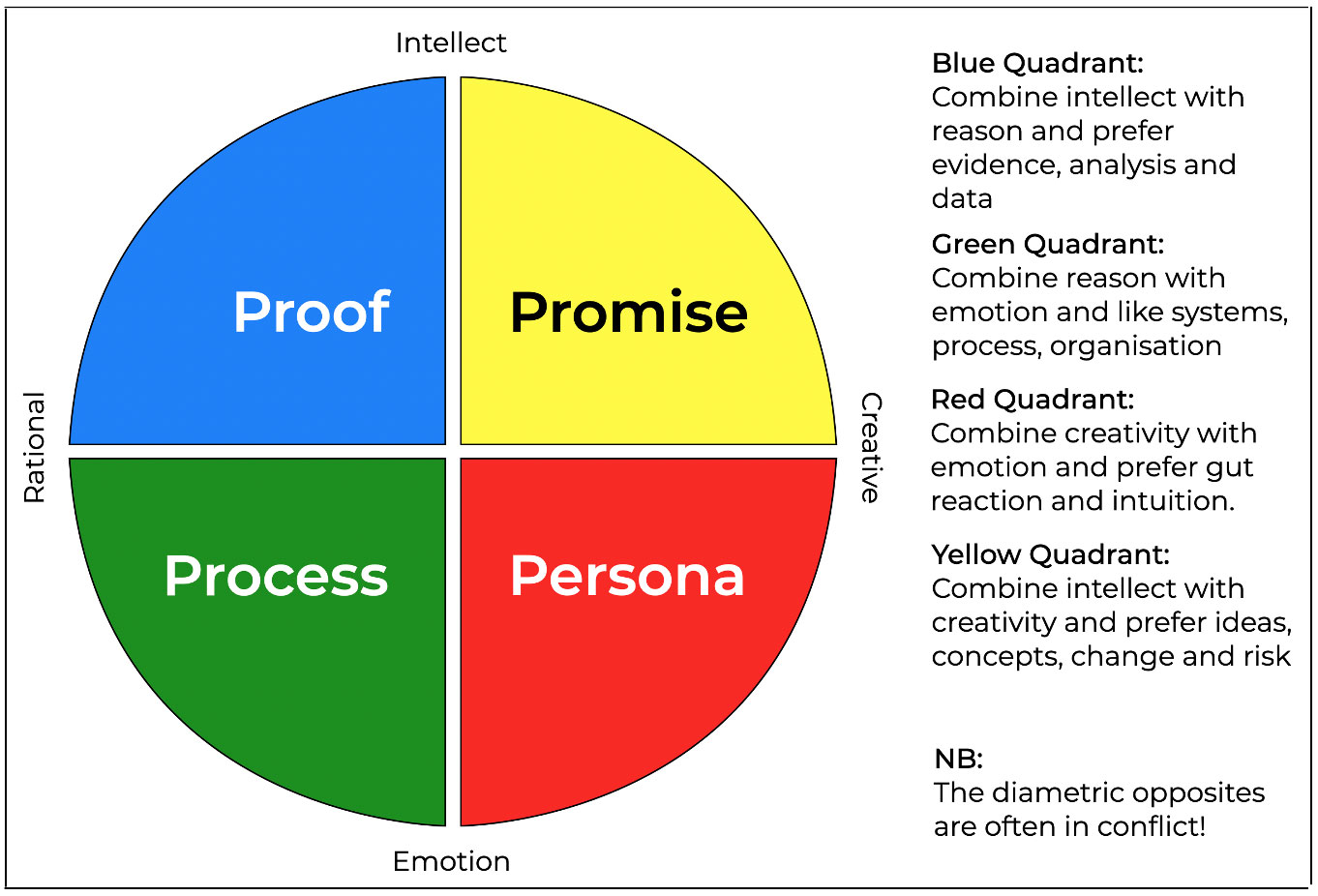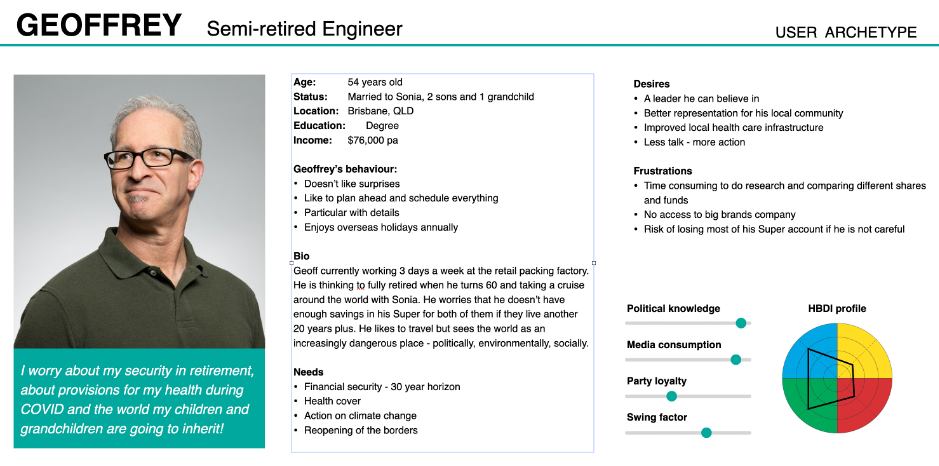HARNESSING THE FOUR ‘P’s OF POLITICAL PERSUASION!
PROMISE, PROCESS, PROOF, PERSONA

The electorate is perhaps the ultimate example of a mass market. It embraces every stratum of society, every religion and political persuasion, every sexual orientation, every generation above the voting age.
But perhaps the biggest mistake most political parties make lies in how they subdivide and define this massive audience as they prepare the messages that they hope will appeal to voters before they reach the ballot box.
Behind all their research and target categorisation, there is one critical criterion they are failing to acknowledge:
How their audience thinks!
Were they to acknowledge this fundamental aspect of their target’s behaviour they’d realise that, irrespective of all other differences, the audience can be divided into four meta-groups:
- Those who focus on facts and evidence – proof
- Those who focus on systems and organisation – process
- Those who focus on the future and possibility – promise
- Those who focus on human nature and style – persona
Research shows that the population is divided evenly, about 25% in each group. So, how do we appeal to all four?
THE HERRMANN BRAIN® DOMINANCE INSTRUMENT (H.B.D.I)
The HBDI, or Whole Brain® model, is a scientifically proven tool for compartmentalising human ‘thinking styles’ to create communication that is more persuasive and memorable.
In the context of politics, it can be used to align any message with any member of the audience. It makes every message universally relevant.
THE WHOLE BRAIN® MODEL:

USING H.B.D.I. TO CREATE CANDIDATE CREDIBILITY AND APPEAL
For a candidate to engage a broad electorate, he or she must be able to appeal to all four quadrants of the Whole Brain® model. To fail in any one quadrant is to risk losing 25% of your audience.
In the critical phase of the electoral cycle, the target audience is focused on the yellow quadrant – the future. Having a credible and desirable vision is essential but this ‘promise’ will only resonate with the population if equal weight is given to:
- The process by which this vision will be realised
- Evidence that the candidate has the capability/track record to deliver on the promise
- An appeal and connection to the emotional core of the audience.
All communication must be structured to create a synergy of these four thinking styles.
USING H.B.D.I TO PROFILE THINKING PREFERENCES IN MARGINAL SEATS.
Traditionally, social media has been used as a means of disseminating information, ideas, and policies. But as a forum for uncensored debate, its greatest value lies in the opportunity to monitor and listen to the conversations that reveal underlying values, beliefs and thinking styles.
‘Social media listening’ within defined geographies is the opportunity to create profiles of the predominant thinking styles within marginal seats.
WHOLE BRAIN ARCHETYPES:

In the example above, there’s a lot of information about this archetypal character we’ve called Geoffrey. We can synthesise this profile by studying the content of the conversations around key electoral issues.
But without identifying the HBDI profile of the target group that Geoffrey represents, we don’t know the thinking style we are trying to influence and persuade.
In this instance, we are dealing with a group that will be swayed by process (methods, timelines and costs) and evidence of capability (data driven). They will be less influenced by charm and vision. To swing this group, we can’t rely on big ideas and big personalities. We need a different communication strategy.
HOW CAN biG HELP?
biG are brand building and communication experts and the only consultancy to have adapted the H.B.D.I. for this specific, marketing purpose and be certified by the Herrmann organisation.
If you’d like to know more about our process, please give Mike Beckerleg a call on 0414 209 220 or drop us a line at info@bigadvantage.com.au